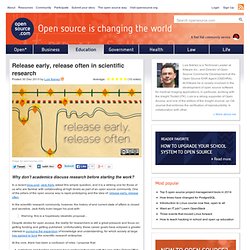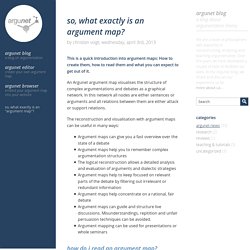

LineUp. Rankings are a popular and universal approach to structuring otherwise unorganized collections of items by computing a rank for each item based on the value of one or more of its attributes.

This allows us, for example, to prioritize tasks or to evaluate the performance of products relative to each other. While the visualization of a ranking itself is straightforward, its interpretation is not, because the rank of an item represents only a summary of a potentially complicated relationship between its attributes and those of the other items. It is also common that alternative rankings exist which need to be compared and analyzed to gain insight into how multiple heterogeneous attributes affect the rankings. Advanced visual exploration tools are needed to make this process efficient. In our paper we present a comprehensive analysis of requirements for the visualization of multi-attribute rankings. Paper (PDF, 1.4 MB) Samuel Gratzl @ InfoVis '13 Talk (PDF, 3.8 MB) Talk (PPTX, 27.8 MB) Linux. What's behind a #1 ranking? Open-source LineUp software enables granular analysis of subjective ranking systems. Behind every "Top 100" list are a generous sprinkling of personal bias and subjective decisions.

Lacking the tools to calculate how factors like median home prices and crime rates actually affect the "best places to live," the public must take experts' analysis at face value. To shed light on the trustworthiness of rankings, Harvard researchers have created LineUp, an open-source application that empowers ordinary citizens to make quick, easy judgments about rankings based on multiple attributes. "It liberates people," says Alexander Lex, a postdoctoral researcher at the Harvard School of Engineering and Applied Sciences (SEAS). "Imagine if a magazine published a ranking of 'best restaurants.' With this tool, we don't have to rely on the editors' skewed or specific perceptions.
The first dynamic visualization software of its kind, LineUp allows users to assign weights to different parameters to create a custom ranking. Release early, release often in scientific research. Image by opensource.com Why don't academics discuss research before starting the work?

In a recent blog post, Jack Kelly asked this simple question, and it is a striking one for those of us who are familiar with collaborating at high levels as part of an open source community. One of the pillars of the open source way is rapid prototyping and the idea of: release early, release often. In the scientific research community, however, the history of and current state of affairs is closed and secretive. Jack Kelly even began his post with: FreeVisualTools - DEBATE MAPS. DebateGraph. Open-Source Argument Mapping.
Open-Source Argument Mapping. So, what exactly is an argument map? This is a quick introduction into argument maps: How to create them, how to read them and what you can expect to get out of it.

An Argunet argument map visualises the structure of complex argumentations and debates as a graphical network. In this network all nodes are either sentences or arguments and all relations between them are either attack or support relations. The reconstruction and visualisation with argument maps can be useful in many ways: Cohere >>> make the connection. DebateGraph. Start [Araucaria@ARG:dundee] Araucaria is a software tool for analysing arguments.
![start [Araucaria@ARG:dundee]](http://cdn.pearltrees.com/s/pic/th/start-araucaria-arg-dundee-67796394)
It aids a user in reconstructing and diagramming an argument using a simple point-and-click interface. The software also supports argumentation schemes, and provides a user-customisable set of schemes with which to analyse arguments. Once arguments have been analysed they can be saved in a portable format called ”AML”, the Argument Markup Language, which is based on XML. XML is a flexible language which can easily be used to generate web pages and data with which to populate a database. The definition of AML is available in the file argument.dtd.
Araucaria has been designed with the student, instructor, and researcher in mind. Araucaria is a collaborative project between Chris Reed and Glenn Rowe in the Argumentation Research Group at the School of Computing, University of Dundee. News 10th September 2009 The araucaria project has been moved to a new server. Download Araucaria Argumentation Corpus Resources. Start [Araucaria@ARG:dundee] Belvedere.sourceforge.net. Home. About CompendiumNG » CompendiumNG. The Open University : KMi : Compendium : Software. Download.